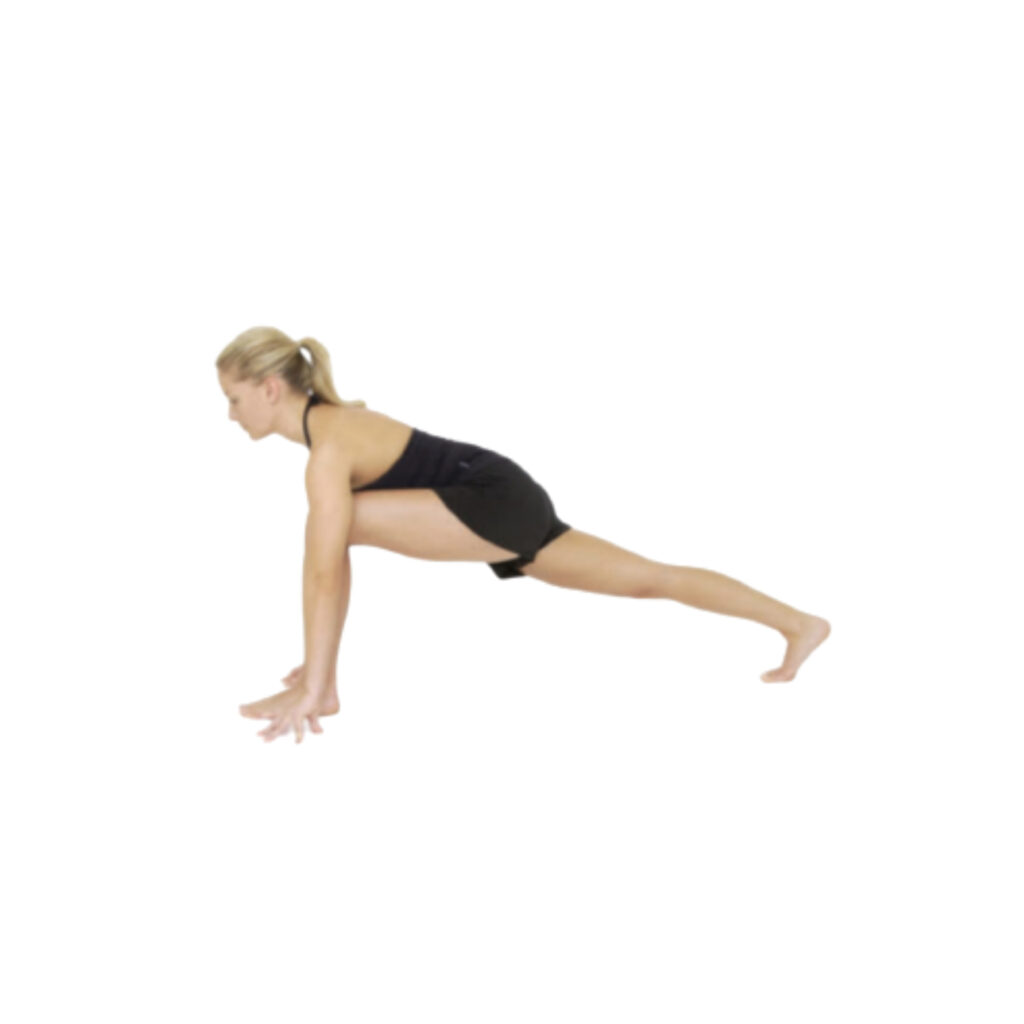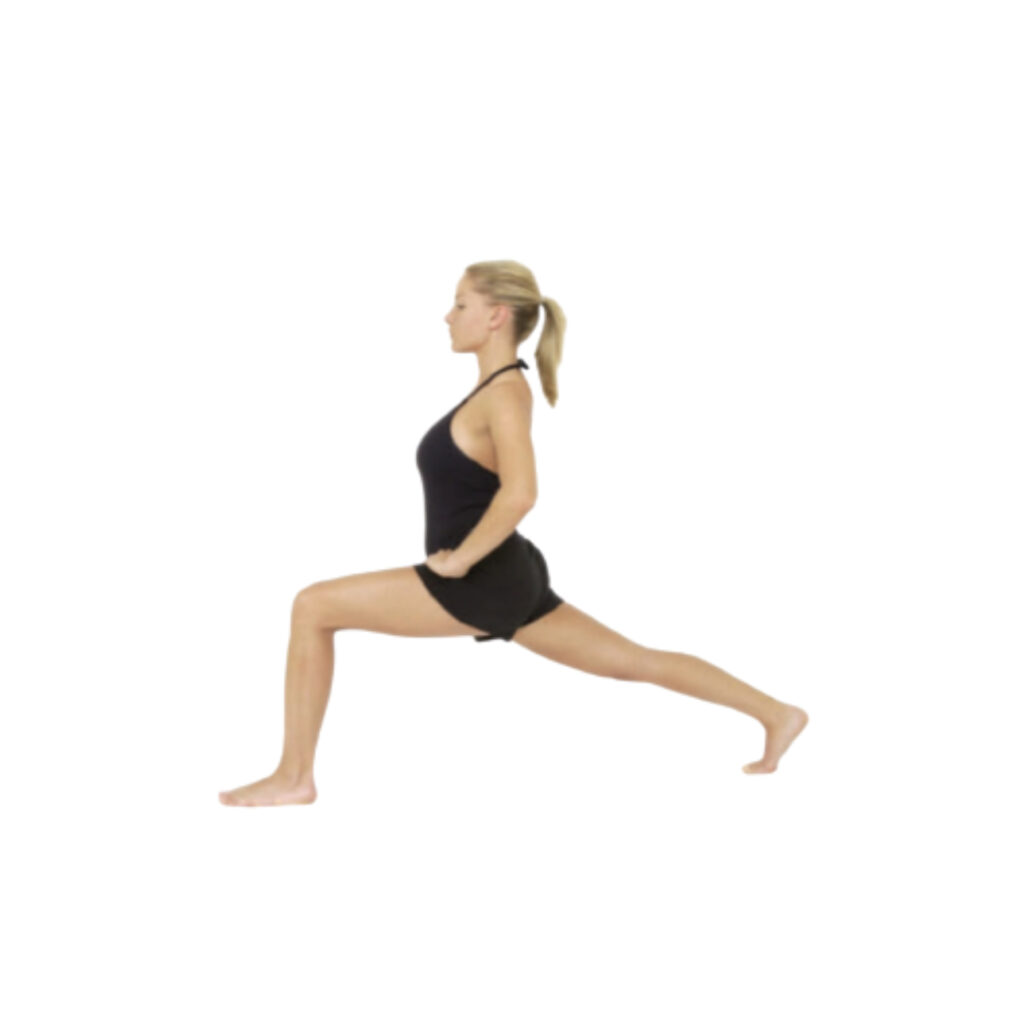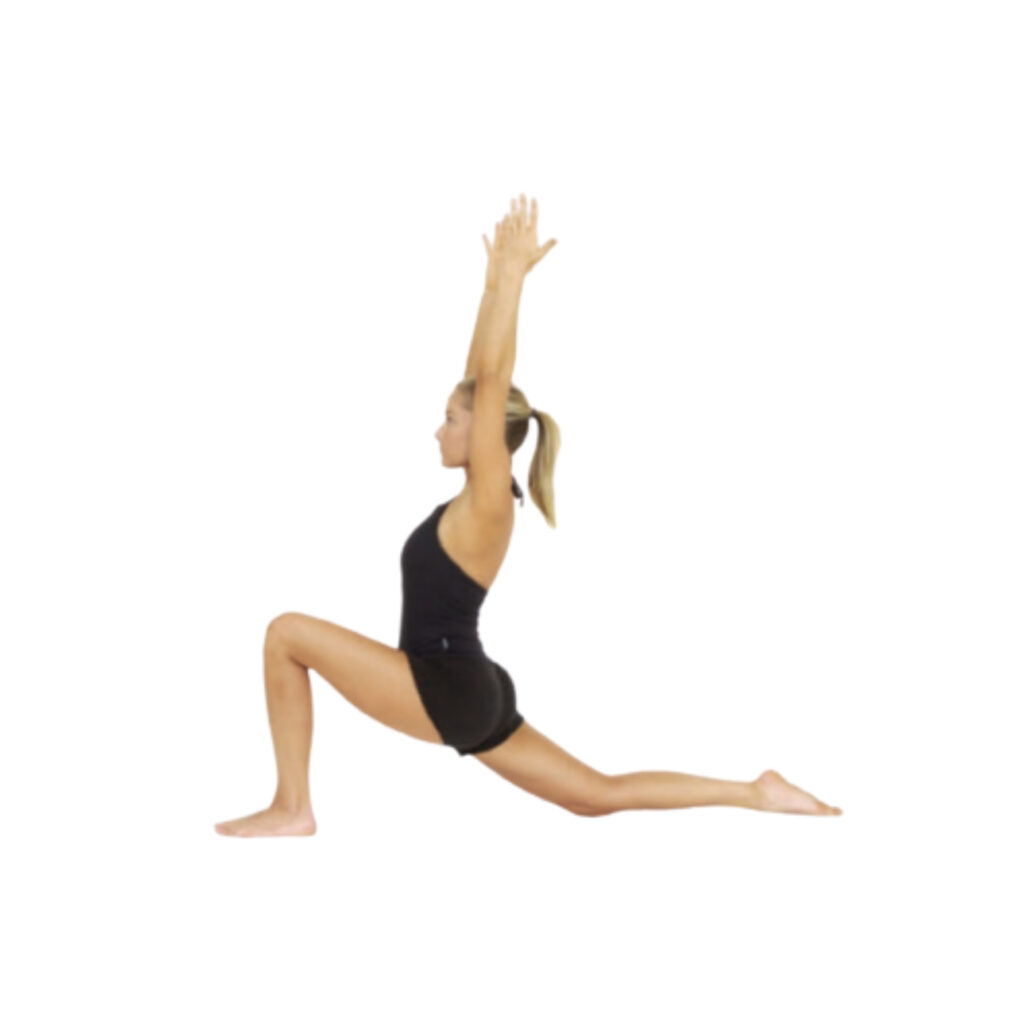The Crescent Lunge (Alanasana or Ashta Chandrasana) is a complete package – it stretches the hips, gluteus and quadriceps muscles and calms the mind while improving balance, concentration, core awareness. If you practice properly, you will feel energetic and refreshed after the Crescent Luge (Alanasana) exercise.
Lunge poses are often repeated several times in a yoga practice. When you read the list of benefits you can see why. Many people who seek in yoga complete in this one pose. Hip pain and stiffness top the list of complaints when it comes to tight areas on the body.
Information
| Name: | Crescent Lunge, Crescent High Lunge Pose, Eight Point Crescent Moon Pose, High lunge pose, Alanasana, Utthita Ashwa Sanchalanasana, Ashta Chandrasana |
| Sanskrit Name: | Alanasana (अलानासना), Utthita Ashwa Sanchalanasana (उत्थित अश्व संचालनासन), Ashta Chandrasana (अष्ट चंद्रासन) |
| English Name: | Crescent Lunge, Crescent High Lunge Pose, Eight Point Crescent Moon Pose, High lunge pose |
| Chakras: | Swadisthana Chakra (Sacral Chakra), Muladhara Chakra (Root Chakra) |
| Level: | Beginner |
| Type: | Standing pose, Stretch, Strength, Balance |
| Counterpose: | Downward-Facing Dog (Adho Mukha Svanasana) |
| Drishti: | (1) Forward (2) Upward, through fingertips |
| Stretch: | Hips, Shoulders, Arm |
| Strength: | Arches, Ankles, Knees, Thighs |
| Regime Note: | Consult a doctor before starting Crescent Lunge (Alanasana) posture regime |
Health Benefits of Crescent Lunge
The benefits derived from Ashta Chandrasana are very similar to the practice of Anjaneyasana and Virbhadrasana series.
The benefits of Crescent Lunge (Alanasana or Astha Chandrasana) are given below:
Tips to Engage Anatomy
1. Improves respiratory system functioning
- In the Crescent Lunge (Ashta Chandrasana), the arms are stretched above the head, extending the chest and the diaphragm to remain stationary in this pose.
- This extension of the shoulders as well as the hands and deep stretch of the chest and diaphragm shrinks the muscles that activate the organs related to the respiratory system.
- Deep and slow breathing in this posture will help to keep the nasal passages clean and thus reduce any kind of allergies.
2. Improves circulatory system
- While air passes through the nose and through the throat through a deep expansion of the diaphragm, in the Crescent Lunge (Alanasana, blood flow also improves with fresh oxygen being generated through the body.
- Deep expansion of the spinal cord brings this fresh soul, which activates the heart.
- An active circulatory system is necessary to maintain a good metabolism within the body, with hormone secretion in a balanced manner.
3. Keeps the muscles of the whole body fit
- Deep stretching for the lower body helps to maintain great looking muscles such as gluteus maximus, quadriceps, hamstrings and inner thigh joints.
- Stretching on the upper body causes the entire spinal muscles to shrink and diagonally (lateral abdominal muscles) also becomes in good shape.
Physical Benefits
- Strengthens the arches, ankles, knees, and thighs
- Stretches the hips and shoulders
- Opens the chest
- Stimulates digestion
- Increases muscular endurance
- Relieves symptoms of sciatica
Mental Benefits
- Builds mental focus
- Develops willpower
- Stimulates the mind
Step-by-step Crescent Lunge (Alanasana)
There are six rounds of Crescent Lunge (Ashta chandrasana) in this sequence, and you get lots of opportunities to find your strong leg muscles.
Step 1

Start in Downward-Facing Dog (Adho Mukha Svanasana). Exhale and move your right leg between your hands, aligning your knee above the heel. Keep your left leg strong and firm.
Step 2

Inhale, step your left foot forward into a lunge, and keep your back leg straight.
- Bring your left ankle in line with your wrists.
- Keep your legs engaged and your back foot flexed.
Step 3

Inhale and lift your torso up and bring your hands onto your hips. Press down with your left foot and pull it back against the resistance of the floor as you pull from the right foot forward to square your hips.
- Widen your pelvic floor by bringing your sitting bones back and apart, then scoop your tailbone down, drawing your low belly in and up.
Step 4

Inhale and stretch your arms over your head and clasp your hands with the index fingers pointing up to the ceiling. Exhale and root from your low belly down through the feet. Inhale and extend from your low belly up through hands. Lengthen your neck and press head back to curl your shoulder blades more onto your back in a back bend. Hold for a few breaths. Pull your legs toward each other as in step 3, inhale, and come up. Repeat on the other side.
- Keep the back thigh buoyantly lifted and heel pressing back.
Gentle Variation
Follow steps 1 through 4 except keep your back knee on the floor and your hands unclasped shoulder-width apart.


Crescent Lunge Partnering practice
- A partner can help you get a feel for the back foot work in this posture. Stand your partner on your back foot, face you, and loop a strap around the inside of your back (he/she can also tie the heel of your back from inside one leg).
- As you bend the front knee, your partner should pull the strap firmly against the inner waist, this is the opposite of the motion of the front leg. Then as you bend toward the bent knee, it should keep pulling on the leash, helping keep your foot on the back foot and heel.
Contraindications of Alanasana
Avoid practicing Alanasana or Ashta Chandrasana, if you have Neck injury or knee injury (use the gentle variation).
It is considered a posture to practice to prepare the body for the Virbhadrasana series or Anjaneya series, it is important to understand the body when practicing this posture as being wrong has an effect on the knees and feet.
Hence 3 Ashta Chandrashan differences are given below:
1. Injuries to the knees or hips
While this posture definitely improves the strength and flexibility of the hips and knees, during the practice of this posture there may be pressure around this space, if the tissue is torn around the hips when it is hurt. It is best to avoid posture.
2. Low or high blood pressure
Understanding the body with the practice of Crescent Lunge is as important as gaining flexibility. While the arms extend above your head and gaze upward, if no one is aware of the body, there is a tendency to tighten the breath. This tightness of breath or withholding of breath can occur against blood pressure patients, and so it is best to seek guidance or avoid practicing this posture.
3. Balance
If someone is visible in the Crescent Lunge while learning about the body apart from the feet, practice is required and therefore for someone who has a headache or body balance related problems, Should slow down. One can also practice it first with support or begin by looking forward and upward, understanding the balance of the body. Using a wall can also be a good option.
Preparatory poses of Crescent Lunge
- Low Lunge (Anjenayasana)
- Adho Mukha Svanasana (Downward-Facing Dog)
- Wide-Legged Forward Bend (Prasarita Padottanasana)
- Reclining Hero Pose (Supta Virasana)
- Chair Pose (Utkatasana)
- Hero Pose (Virasana)
Follow-up Poses of Crescent Lunge (Alanasana or Ashta Chandrasana)
- Warrior I Pose (Virabhadrasana I)
- Warrior II Pose (Virabhadrasana II)
- Chair Pose (Utkatasana)
Bottom line
The muscles of the feet are the largest muscles of the body. Crescent lunge pose as a permanent pose creates focus, warmth, stamina, strength; Increase circulation, metabolism; And the posture improves spinal health and coordination. This pose is more challenging than you expect and requires a lot of muscular activity to keep you balanced with the extended leg position.
This asana is not just about stretching – it is about equal amounts of stretching and strengthening. Even within the stretching element, stretching and first detecting muscle strength will give you more supported injury-free exercises.
The temptation in the Ashta Chandrasana is to release the muscles that support the hip joint, and let the upper body weight sink to the hips as low as it can go. In this situation, you have lost muscle support in the hip joint and are more likely to overstretch the muscle.
A more supportive version of the posture is to come up to 80% of your full range of motion, strengthen the buttock muscles of your hind legs and hug your outer hips at midline. Feel the strength in the muscles that are flexing and the muscles have a supported supported stretch that is stretching. This is how it feels and this principle can be realized throughout your practice for a more sustainable lifelong practice of yoga.














